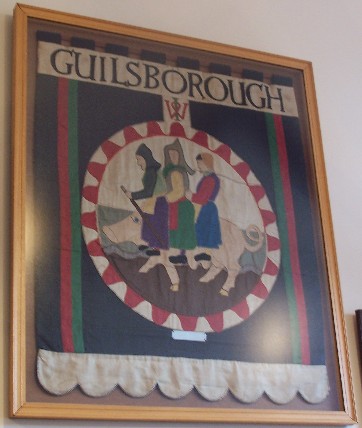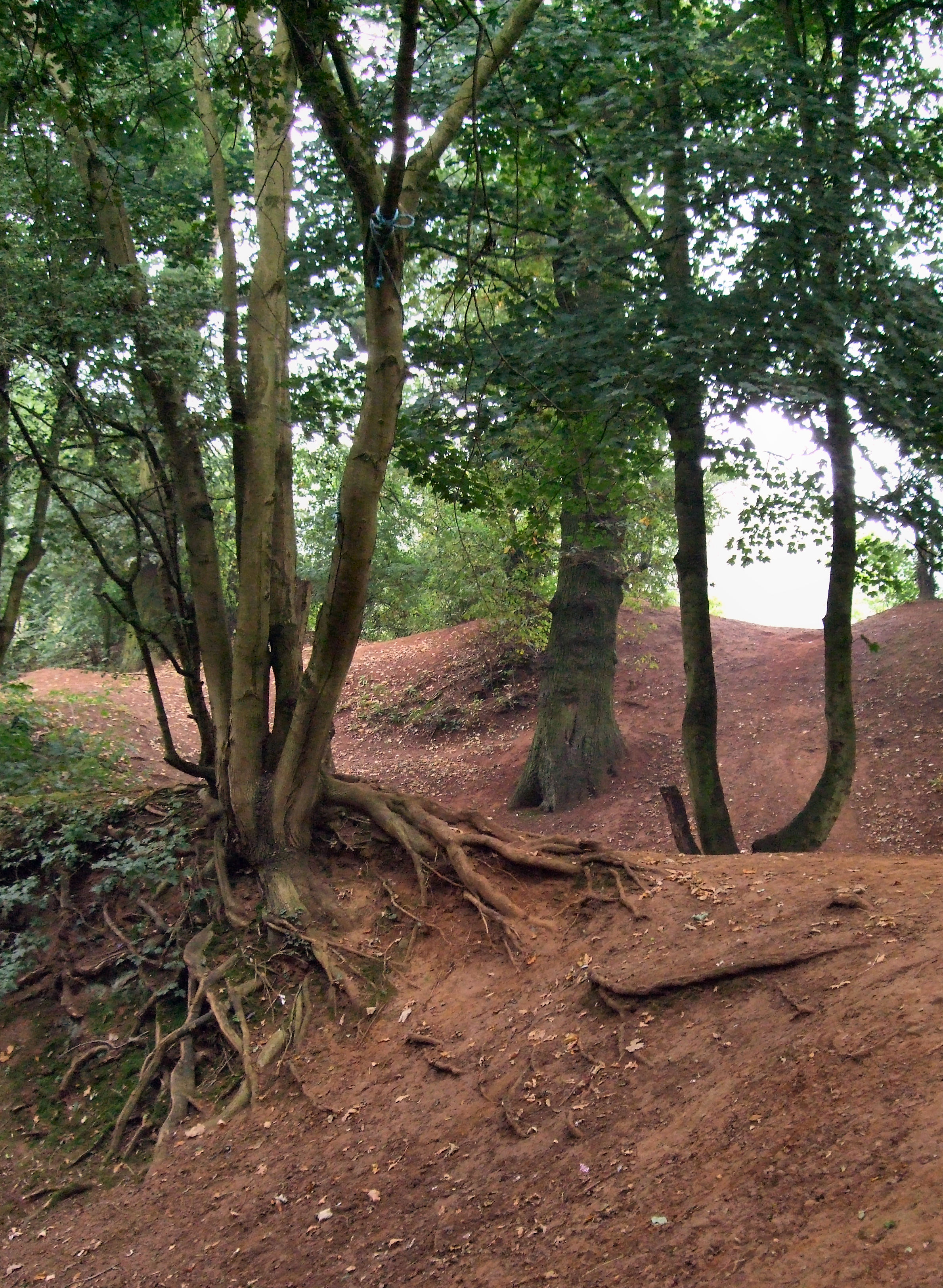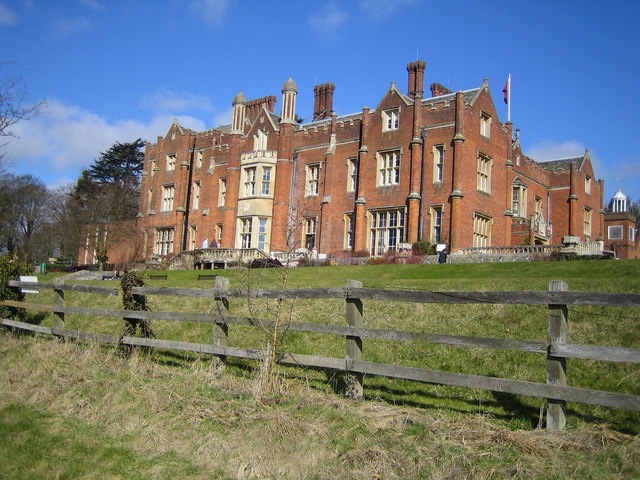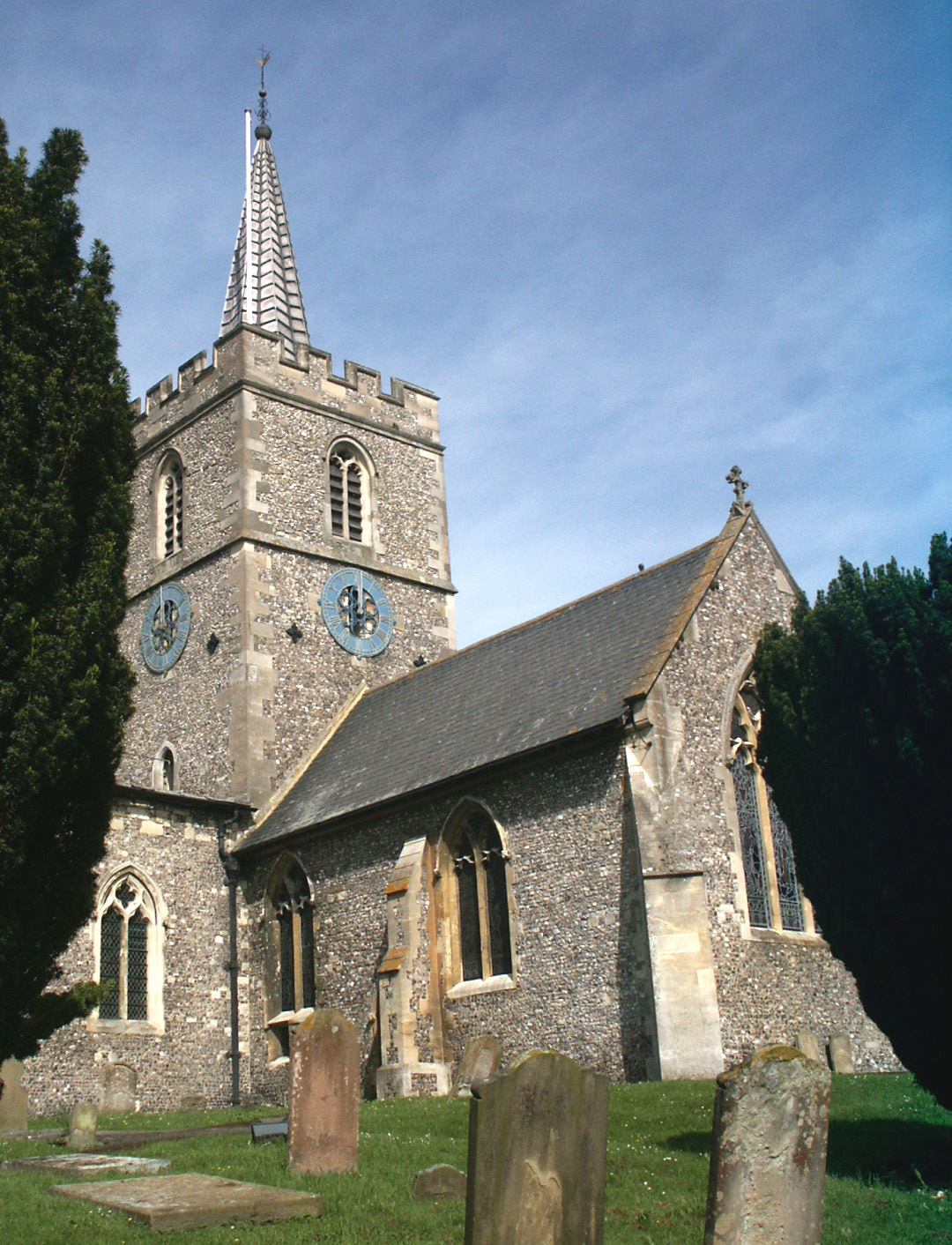|
Guilsborough House
Guilsborough House is a country house in Guilsborough near Northampton, England. It is a Grade II listed building. History The house was built in 1632 and was extended in the 18th century and the 19th century. In the 19th century it came into the ownership of the Renton family who were prominent in the village of Guilsborough. In 1933, Captain Robert Treeck, a Baron and German agent, reporting directly to Hitler, had moved to England together with his Chilean mistress (later wife in 1938), Baroness Violetta Schroeders. He leased two properties: Luckington Manor in Wiltshire, and Guilsborough House, his main residence, where he entertained lavishly and rode with the Pytchley Hunt. In September 1939, Treeck vanished, and Guilsborough and its contents were placed under the control of the Custodian of Enemy Property. During the Second World War World War II or the Second World War, often abbreviated as WWII or WW2, was a world war that lasted from 1939 to 1945. It i ... [...More Info...] [...Related Items...] OR: [Wikipedia] [Google] [Baidu] |
Guilsborough
Guilsborough is a village and civil parish in West Northamptonshire in England. At the time of the 2001 census, the parish's population was 882 people, reducing to 692 at the 2011 Census. It is at the centre of an area of rural villages between the towns of Northampton, Daventry, Rugby and Market Harborough. There is a secondary school, primary school, fire station, pub, a new village shop including a Post Office (formerly the doctor's surgery) and a new doctor's surgery with pharmacy and a Hairdressers. History The villages name means 'Gyldi's fortification'. The hundred is named after Guilsborough, but the site of the meeting-place is unknown. Guilsborough is made up of two hamlets, now joined. Guilsborough (Guildesburgh) and Nortoft. The former referring to the Roman fort, or referencing the earlier Late Bronze Age/Iron Age Enclosure on the same site. Possibility of the name deriving from a later Anglo-Saxon base word 'gebeorgan' (enclosure to save/protect/preserve) gi ... [...More Info...] [...Related Items...] OR: [Wikipedia] [Google] [Baidu] |
Northampton
Northampton () is a market town and civil parish in the East Midlands of England, on the River Nene, north-west of London and south-east of Birmingham. The county town of Northamptonshire, Northampton is one of the largest towns in England; it had a population of 212,100 in its previous local authority in the 2011 census (225,100 as of 2018 estimates). In its urban area, which includes Boughton and Moulton, it had a population of 215,963 as of 2011. Archaeological evidence of settlement in the area dates to the Bronze Age, Romans and Anglo-Saxons. In the Middle Ages, the town rose to national significance with the establishment of Northampton Castle, an occasional royal residence which regularly hosted the Parliament of England. Medieval Northampton had many churches, monasteries and the University of Northampton, all enclosed by the town walls. It was granted a town charter by Richard I in 1189 and a mayor was appointed by King John in 1215. The town was also the sit ... [...More Info...] [...Related Items...] OR: [Wikipedia] [Google] [Baidu] |
Listed Building
In the United Kingdom, a listed building or listed structure is one that has been placed on one of the four statutory lists maintained by Historic England in England, Historic Environment Scotland in Scotland, in Wales, and the Northern Ireland Environment Agency in Northern Ireland. The term has also been used in the Republic of Ireland, where buildings are protected under the Planning and Development Act 2000. The statutory term in Ireland is "protected structure". A listed building may not be demolished, extended, or altered without special permission from the local planning authority, which typically consults the relevant central government agency, particularly for significant alterations to the more notable listed buildings. In England and Wales, a national amenity society must be notified of any work to a listed building which involves any element of demolition. Exemption from secular listed building control is provided for some buildings in current use for worsh ... [...More Info...] [...Related Items...] OR: [Wikipedia] [Google] [Baidu] |
Luckington
Luckington is a village and civil parish in the southern Cotswolds, in north-west Wiltshire, England, about west of Malmesbury. The village is on the B4040 road linking Malmesbury and Old Sodbury. The parish is on the county border with Gloucestershire and includes the village of Alderton and the hamlet of Brook End. Geography The Cotswolds are designated as an Area of Outstanding Natural Beauty (AONB) which means it is recognised as containing some of Britain's finest countryside. As such it is protected as a special landscape of national importance. The area covers 790 square miles, of which some 80% is farmland. The region is delineated by the belt of rich limestone – the source of building materials for cottages, fine buildings and churches. The limestone Cotswold stone in the northern Cotswolds is a rich honey coloured brown which gradually grades creamier towards the south at Luckington. Badminton House is just across the county border, about southwest of Luckington ... [...More Info...] [...Related Items...] OR: [Wikipedia] [Google] [Baidu] |
Custodian Of Enemy Property
The Custodian of Enemy Property is an institution that handles property claims created by war. In wartime, civilian property may be left behind or taken by the occupying state. In ancient times, such property was considered war loot, and the legal right of the winner. In the Fourth Geneva Convention Article 147, such action is defined as war crime: Custodian of Enemy Property laws The following list is incomplete. Bangladesh: The Enemy Property Act was established to manage property of enemies (Indians) taken while it was part of Pakistan (1948–1971) or during its independence war (1971). Canada The Office of the Custodian of Enemy Property was established in 1916 and existed until 1985, dealing with the property of Canada's enemies in both World Wars as well as the seized property of Japanese Canadians. India: The Custodian for Enemy Property for India was established to manage Pakistani property taken in the Second Kashmir War (1965). Israel: The Absentees' Prope ... [...More Info...] [...Related Items...] OR: [Wikipedia] [Google] [Baidu] |
World War II
World War II or the Second World War, often abbreviated as WWII or WW2, was a world war that lasted from 1939 to 1945. It involved the World War II by country, vast majority of the world's countries—including all of the great powers—forming two opposing military alliances: the Allies of World War II, Allies and the Axis powers. World War II was a total war that directly involved more than 100 million Military personnel, personnel from more than 30 countries. The major participants in the war threw their entire economic, industrial, and scientific capabilities behind the war effort, blurring the distinction between civilian and military resources. Air warfare of World War II, Aircraft played a major role in the conflict, enabling the strategic bombing of population centres and deploying the Atomic bombings of Hiroshima and Nagasaki, only two nuclear weapons ever used in war. World War II was by far the List of wars by death toll, deadliest conflict in hu ... [...More Info...] [...Related Items...] OR: [Wikipedia] [Google] [Baidu] |
IV Corps (United Kingdom)
IV Corps was a corps-sized formation of the British Army, formed in both the First World War and the Second World War. During the First World War the corps served on the Western Front throughout its existence. During the Second World War it served in Norway and Britain until it was transferred to India, which was threatened with attack after Japan entered the war. Prior to the First World War In 1876 a Mobilisation Scheme for eight army corps was published, with '4th Corps' headquartered at Dublin and comprising the regular units of Irish Command, supported with militia. In 1880, it was organised as follows: * 1st Division (Dublin) ** 1st Brigade (Dublin) *** 1st Bn. 22nd Foot (Dublin), 82nd Foot (Dublin), 3rd Bn. Rifle Brigade (Dublin) ** 2nd Brigade (Belfast) *** Queen's Edinburgh Light Infantry Militia (Dalkeith), 1st Lanark Militia (Hamilton), 2nd Lanark Militia (Lanark) ** Divisional Troops *** Highland Light Infantry Militia (Inverness), 3rd Dragoon Guards (Dublin), 19th ... [...More Info...] [...Related Items...] OR: [Wikipedia] [Google] [Baidu] |
Latimer House
Latimer House is a large country house at Latimer, Buckinghamshire. It is now branded as De Vere Latimer Estate and functions as a countryside hotel used for country house weddings and conferences. Latimer Place has a small church, St Mary Magdalene, which was built by Lord Chesham, in the grounds. The Cavendish family Latimer House, a mansion on the hill on the edge of the village, was once a home of members of the Cavendish family who became the barons Chesham. During the 17th century, Latimer Manor was the home of Christian Cavendish, Countess of Devonshire, then later of William Cavendish, 3rd Earl of Devonshire, and his wife, the former Elizabeth Cecil because Chatsworth House had been sequestered by Parliament. Their daughter, Anne Cecil, Countess of Exeter was born at Latimer and would later marry John Cecil, 5th Earl of Exeter, known as Lord Burghley, and would go living at Burghley House. During the 18th century, the Manor was lived in by the wife of Elihu Yale, ... [...More Info...] [...Related Items...] OR: [Wikipedia] [Google] [Baidu] |
Chesham
Chesham (, , or ) is a market town and civil parish in Buckinghamshire, England, south-east of the county town of Aylesbury, north-west of central London, and part of the London commuter belt. It is in the Chess Valley, surrounded by farmland. The earliest records of Chesham as a settlement are from the second half of the 10th century, although there is archaeological evidence of people in this area from around 8000 BC. Henry III granted a royal charter for a weekly market in 1257. Chesham is known for its ''four Bs'' boots, beer, brushes and Baptists. In the face of fierce competition from both home and abroad during the later 19th and early 20th centuries, the three traditional industries rapidly declined. The ready availability of skilled labour encouraged new industries to the town both before and after the Second World War. Today, employment in the town is provided mainly by small businesses engaged in light industry, technology and professional services. From the ... [...More Info...] [...Related Items...] OR: [Wikipedia] [Google] [Baidu] |
9th Armoured Division (United Kingdom)
The 9th Armoured Division was an armoured division of the British Army, raised during the Second World War. It never saw active service during the war as a complete division. History The 9th Armoured was created on 1 December 1940 and dispersed and disbanded on 31 July 1944. It never saw active service during the war as a complete division, although its 27th armoured brigade fought in the Normandy campaign and NW Europe in 1944. General Officer Commanding The 9th Armoured Division had three men who held the position of General Officer Commanding during the Second World War. Component Units Component units included: 27th Armoured Brigade ''(transferred from division on 10 August 1942)'' * 4th/7th Royal Dragoon Guards * 13th/18th Royal Hussars (Queen Mary's Own) * 1st East Riding Yeomanry * 1st Battalion, Queen Victoria's Rifles - ''renamed 7th Battalion, King's Royal Rifle Corps on 22 March 1941'' 28th Armoured Brigade * 5th Royal Inniskilling Dragoon Guards * 15th/19th Th ... [...More Info...] [...Related Items...] OR: [Wikipedia] [Google] [Baidu] |
43rd (Wessex) Infantry Division
The 43rd (Wessex) Infantry Division was an infantry division of Britain's Territorial Army (TA). The division was first formed in 1908, as the Wessex Division. During the First World War, it was broken-up and never served as a complete formation. It was reformed in the TA in 1920, and then served in the campaign in North West Europe from June 1944 until May 1945, during the Second World War. The division suffered heavy casualties and gained an excellent reputation. After the Second World War, the division formed part of the postwar TA, and became the 43rd (Wessex) Division/District in 1961. It was finally disbanded in 1967. Formation The Territorial Force (TF) was formed on 1 April 1908 following the enactment of the Territorial and Reserve Forces Act 1907 (7 Edw.7, c.9) which combined and re-organised the old Volunteer Force, the Honourable Artillery Company and the Yeomanry. On formation, the TF contained 14 infantry divisions and 14 mounted yeomanry brigades. One of th ... [...More Info...] [...Related Items...] OR: [Wikipedia] [Google] [Baidu] |
Evelyn Fanshawe
Major-General Sir Evelyn Dalrymple Fanshawe, CB, CBE (25 May 1895 – 14 March 1979) was a British Army officer and the Director of the International Refugee Organisation in the British Zone of Germany from 1948 to 1952. A grandson on his mother's side of Sir Evelyn Wood, he was born to Lt. Gen. Sir Hew Dalrymple Fanshawe and Anna Paulina Mary Wood in British India in 1895. He married Marie Harari in 1920, daughter of Sir Victor Harari. Military career After being educated at The King's School, Canterbury and attending the Royal Military College, Sandhurst, Fanshawe was commissioned into the Queen's Bays in 1914 and saw service in France, Palestine, Mesopotamia, Persia, Russia and Syria during World War I; among his assignments during this period was Aide-de-camp to his father who was General Officer Commanding the British Cavalry Corps (1915). From 1915 to 1919 he was seconded to the Royal Flying Corps. He returned to his regiment as Adjutant in 1919. In 1939 he was appo ... [...More Info...] [...Related Items...] OR: [Wikipedia] [Google] [Baidu] |







